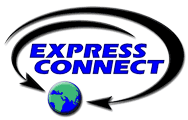![]() Contact Us
Contact Us ![]() Start a Conference Now
Start a Conference Now ![]() ExpressDial Reports
ExpressDial Reports ![]() Site Map
Site Map
Telephone and Web Conferencing in an Instant
Simple... Affordable... Automated... Convenient!
Home > International Dial In Numbers
Best Practices
Conducting Effective Conference Calls
Conference Leader:
- Ensure attendees receive all meeting materials prior to the call
- Request everyone go on “mute” to reduce noise during the call
- Take attendance during the call
- Articulate and speak slowly
- Provide pauses during discussions and between topics
- Periodically ask the attendees for questions and inquire if clarification is required to ensure comprehension of topics
- Conduct a Q & A session at the end of the call – Summarize the call and describe any follow up steps, if appropriate
Contributing to Effective, Productive Conference Calls
Conference Participants:
- Dial-in from a comfortable, quiet place with a drink for whatever you need to give the meeting your full attention.
- Remove other distractions (close all unrelated applications on your computer, turn off any call waiting beeps).
- noHave materials needed for the meeting pulled out in advance and within reach.
- Turn off any call waiting beeps
- Do NOT use the hold button. Know how to “mute” and “unmute” your conference line (as per call leader’s instructions)
Ensuring Efficient Conference Calls
Planning a Remote Meeting:
- Select a specific meeting start time that in NOT the top or bottom of the hour (e.g. 9:10am or 9: 40am) INCLUDING time zone.
- Select a date / time that desired participants are more likely to call in from a landline (for line clarity).
- Whenever possible, provide a toll-free dial-in number so that participants are not encouraged to dial in using their mobile phone.
- Be sure participants have a TechSupport phone number in addition to all necessary dial-in instructions (you don’t want them calling YOU for help when you are getting ready to start / lead a call).
- Send reminders (REPEATING all access instructions and TechSupport info) 2 days in advance of the meeting and again about an hour before the meeting.
Initiating a Remote Meeting:
- Beforehand, review all the conferencing features available to you during a call (know how to “mute all”, bring TechSupport onto the line, dial-out to any missing key attendees, etc)
- Call leaders should dial-in 5 minutes ahead of time so participants can begin to dial-in a minute or two before the scheduled meeting start time.
- Dial in from a landline; if possible, do not lead from a speaker phone; ideally, use a headset to minimize all background noise.
- If recording the call, start the recording after all attendees have dialed-in so you don’t have dead air
Leading a Remote Meeting: Treat with all the respect and formality that you would a live meeting…
- Have an agenda; share it and follow it
- If you are not recording the call, clarify who is taking the meeting notes
- Cover the typical “housekeeping items” at the start of the meeting
- Let everyone know if there will be breaks and when (suggested for remote meetings over one hour; 5 minute breaks are long enough when remote)
- Remind attendees NOT to use the “hold” button (if they do, all will hear their hold music)
- Remind attendees what to do if they need technical / operator assistance (e.g., lose connection, can’t hear well)
- Announce your intent or non-intent to force all attendees onto “mute” and when they can expect to be “unmuted” (Recommendation: every 15 minutes or so just to make sure there are no urgent communications… please talk louder, go slower, we are confused)
- Instruct attendees when you would like questions… throughout (okay to interject), at periodic breaking points, only at the end.
- Remind participants that speak or ask questions to start each time by stating their name; everyone may not recognize voices.
Selecting a Conferencing Provider
- Find The Service That Matches Your Need:
- Beware of “free” services that are ineffective and unreliable driving up productivity costs
- Conversely, don’t pay extra for services with more advanced features than you really need
- Be Sure These Key Satisfaction Drivers Are Provide:
- Is Technical Support / Operator assistance available 24x7 (for free)?
- Is User Training provided free of charge and as much as needed?
- Be Sure Your Security Requirements Can Be Met:
- Minimum Recommended: PIN-activated calls so that moderator accounts cannot be used by past participants without authorization.
- Have materials needed for the meeting pulled out in advance and within reach.
